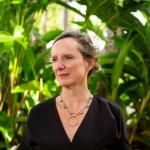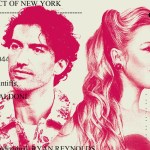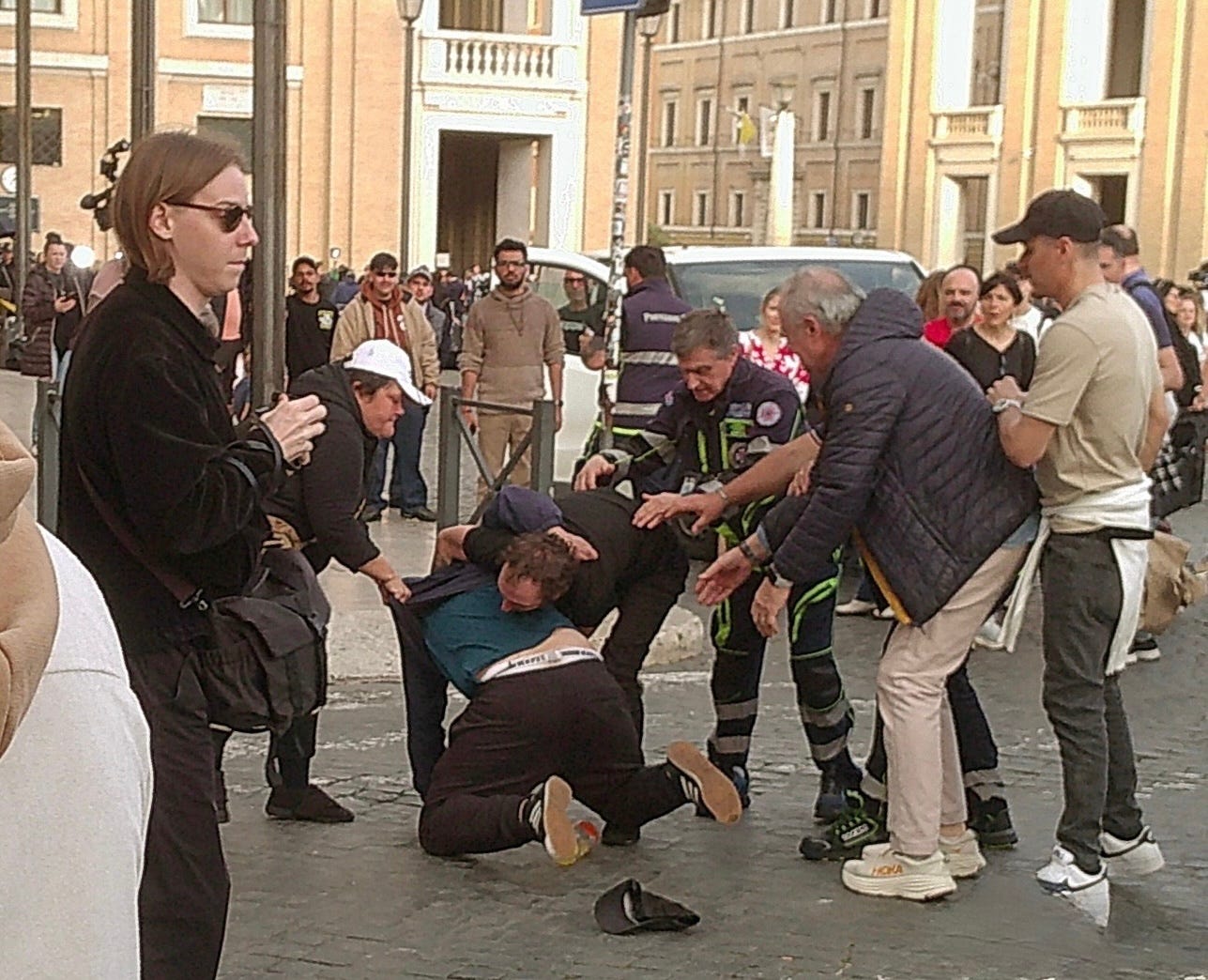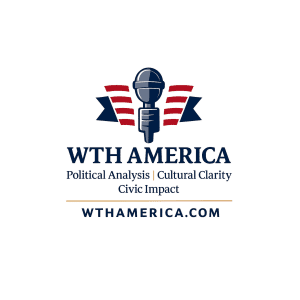
Earthjustice President Describes a “Fundamentally Different” Era of Hostility Toward Environmentalists
April 22, 2025
Who Reads Entire Lawsuits for Fun?
April 22, 2025Vatican City
THOUSANDS GATHERED AT THE PIAZZA SAN PIETRO Monday evening to pray the rosary and honor the life of Pope Francis, who died from a stroke shortly after waking earlier in the day.
“Ave, o Maria piena di grazia, Il Signore è con te,” the crowd recited in unison. “Tu sei benedetta fra le donne e benedetto è il frutto del tuo seno, Gesù. Santa Maria, Madre di Dio, prega per noi peccatori, addeso e nell’ora della nostra morte. Amen.”
The crowd was diverse. Priests and nuns from various orders stood together; Sisters of St. Joseph mingled with Benedictine nuns. I observed Dominicans in white and black, Capuchin monks in brown, and more priests than I could count in the customary garb of the black suit and white clerical collar.
Tourists from all over came to the square as well. Many were reciting the Rosary—in Italian, French, Spanish, English, and some languages I couldn’t identify.
One man stood holding two Palestinian flags and wearing a sandwich board with the inscription, “GRAZIE, sua Santita” (THANK YOU, your Holiness); the sentiment was attributed to the Palestinian diaspora in Rome. (Pope Francis’s consistent advocacy on behalf of, and pastoral care for, Gaza’s civilian population has come up frequently in remembrances of his life; the pope called the Holy Family Church—Gaza’s only Catholic place of worship—nearly every day of the ongoing war.) The man with the sandwich board stood in silence as people circulated around him. Most passersby offered him praise and thanks, while one American stopped to question why he was holding such a “controversial” sign. Some people standing near the Palestinian man then started asking him to leave: “No politics. No politics here. Go away.” He soon did.
Tourists cried and hugged each other. Families posed for photos to commemorate the historic moment—Francis was, after all, only the 266th pope in the Church’s history, which spans millennia. In the back of St. Peter’s Basilica, the 320,000-square-foot church at the center of the Vatican, a pen of journalists, priests, and content creators recorded videos and launched livestreams to discuss and spread the word of the day’s events.
But even in these somber moments, diplomacy can prove elusive. While making my way into the square, I heard raised voices and looked up in time to see a fight break out in the middle of the street between two drunk men—tourists, by the look of them, there to see what was drawing the crowds. After some tussling on the ground, a handful of Carabinieri—the Italian national police force—broke it up and led the men away in handcuffs.

The fight was ultimately irrelevant to the evening; more likely the byproduct of Italy’s lax public drinking laws than a religious dispute. Most of the people around me were there for calm and peace, as was attested in the way visitors filtered in and out of the main public places. They moved in such an orderly way that it seemed as though they’d been choreographed for a film.
It will take nearly a week before Francis is laid in his final resting place. His official funeral is slated for Saturday morning.
Right now, Francis’s body is still at his personal residence; he is dressed in a red robe and papal mitre, and there is a rosary in his hand. On Wednesday, his body will be transported to St. Peter’s Basilica for public viewing.
After the funeral, there will be a procession through Rome to Santa Maria Maggiore, where Francis will be buried. He will be the first pope buried there since Pope Clement IX, who died in 1669. He will also be the first pope buried outside St. Peter’s in over a century; more than half of the Church’s leaders going back to the time of St. Peter himself have been buried there. Other popes in Church history were placed in Rome’s catacombs; others have been buried at various churches throughout the city, and a few popes in Catholic history have been laid to rest in France and Germany.
Donald Trump said he will attend the funeral. He will be doing so in spite of his major ideological differences with the late pope and the church. In his statement, the president appeared to express excitement about the event.
“Melania and I will be going to the funeral of Pope Francis, in Rome,” Trump announced Tuesday. “We look forward to being there!”
In a February letter, Francis expressed frustration with the United States’ aggressive, hostile, and indiscriminate treatment of migrants, a situation that has escalated to a point of threatening a profound constitutional crisis.
Francis wrote that current narratives on migrants “easily introduces an ideological criterion that distorts social life and imposes the will of the strongest as the criterion of truth,” adding:
I exhort all the faithful of the Catholic Church, and all men and women of good will, not to give in to narratives that discriminate against and cause unnecessary suffering to our migrant and refugee brothers and sisters. With charity and clarity we are all called to live in solidarity and fraternity, to build bridges that bring us ever closer together, to avoid walls of ignominy and to learn to give our lives as Jesus Christ gave his for the salvation of all.
This was hardly the first time Francis has directed criticism at Trump. During the 2016 election cycle, responding to comments about Trump’s promise to build a wall between the United States and Mexico, Francis told reporters, “I’d just say that this man is not Christian if he said it in this way.”
Trump responded by calling the comments “disgraceful” and noting that the terrorist group ISIS viewed Vatican City as its “ultimate trophy.” Republicans have repeatedly pointed out that Vatican City is itself surrounded by walls.
Trump will be there nonetheless. Though the president is not a Catholic, the First Lady is, as is Vice President JD Vance, who briefly met with Francis the day before his death.
Maybe a reflection on Francis’s life will adjust Trump’s worldview in some small but meaningful way. The evidence for such a change is ambiguous at best. After the pope died, Trump said kind things about him. The New York Times reports that Trump was “asked if he agreed with the pope’s tolerance toward migrants,” to which he replied: “‘Yeah, I do.’” Don’t be too quick to say “today is the day Donald Trump became president,” though. The Times continues: “moments later, in response to a question about a legal case over his administration’s deportation of Venezuelan migrants, Trump railed against the ‘millions and millions’ of migrants who have entered the United States.”
Great Job Joe Perticone & the Team @ The Bulwark Source link for sharing this story.







